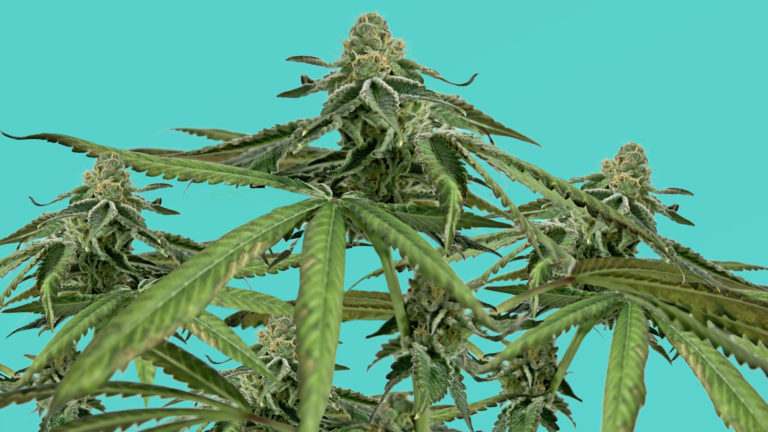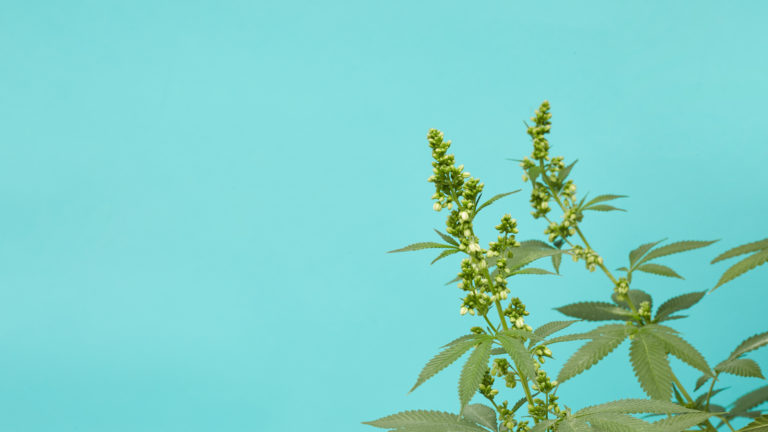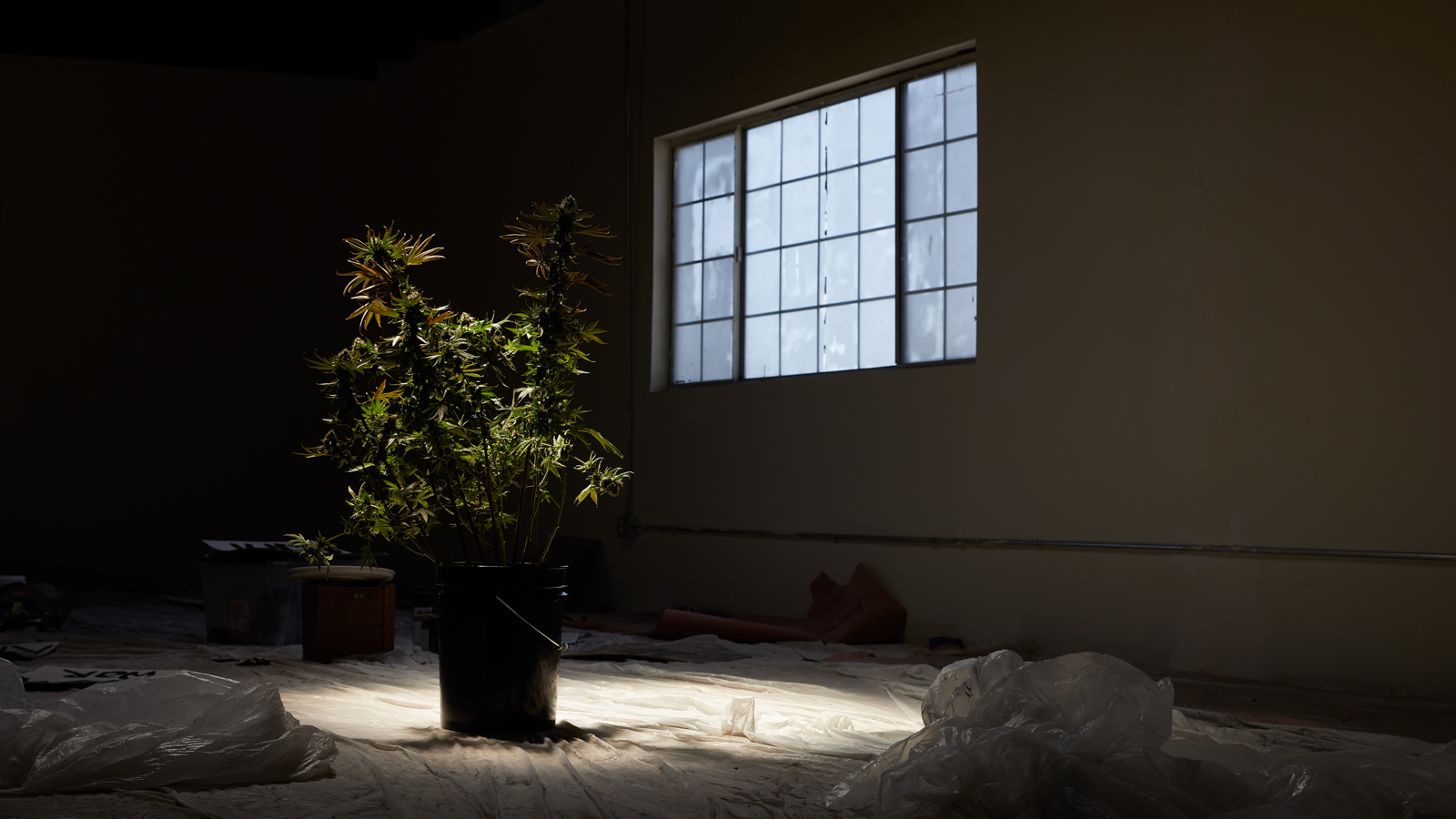Many hobbyist growers elect to use grow tents, closets, or other enclosed spaces when growing cannabis indoors, often outfitting these spaces with lights and even humidity and temperature control systems. Depending on your level of interest and enthusiasm, these systems can cost anywhere from hundreds to thousands of dollars.
But can you simply stick a cannabis plant in a nice sunny window and let it do its thing? Read on to understand what to expect if you choose to grow cannabis indoors au naturel, along with a few tips and tricks from experts to help your indoor plant thrive in a minimal setup.
 Photo by: Gina Coleman/Weedmaps
Photo by: Gina Coleman/WeedmapsImage lightbox

Is my home a suitable environment for cannabis?
The environment inside your home is perfectly safe for your cannabis plant. It offers all the same basic benefits you enjoy, like warmth, oxygen, protection from the elements, and light.
“I make zero effort to control the climate of my grow spot. If you're growing without a light, that plant will be just fine in regular household conditions that are suitable to us humans,” explains Jimmy B Harvests, a YouTube creator that documents his adventures in growing cannabis, along with other fruits and vegetables, at home.
What to expect when growing weed indoors without lights
Will growing a plant indoors without grow lights leave you with wonky plants? Lower yields? Less potent flower?
Not necessarily. “The more effort and energy you put into a plant, the bigger and better your harvest will be,” said Jimmy. “I think that's a pretty universal truth in the gardening game, but I've definitely been surprised by how well plants can do without the elaborate tents, fans, filters, feeding systems, and so on.”
Successfully growing a cannabis plant indoors is all about covering the plant's basic needs: air, light, temperature, water, and nutrients. So, if you get those things right, your homegrown cannabis plant could provide much more than a fun experiment. And considering that indoor cannabis plants can grow a few feet tall and equally wide, you should anticipate young plants to take up more space by the time they reach maturity.
Related: An introduction to indoor cannabis cultivation
 Photo by: Gina Coleman/Weedmaps
Photo by: Gina Coleman/WeedmapsImage lightbox

Make sure your cannabis plant gets enough light
Cannabis plants need plenty of bright light or direct sunlight. Southeastern and southwestern exposures provide the most direct sunlight per day, followed by southern, eastern, and western. If you're dealing with a northern exposure, your cannabis plants won't have enough direct light to thrive. You'll need to supplement with artificial light.
To maximize the amount of daily sunlight your plant receives, work with the seasons. The total number of daylight hours vary depending on where you are, but in the Northern Hemisphere a good rule of thumb is to germinate your seeds around the Spring Equinox.
Bottom line: Sunrooms, rooms with lots of southern-facing windows, and bay windows are all great spots for indoor cannabis plants. Aim for at least six hours of direct sunlight per day.
 Photo by: Gina Coleman/Weedmaps
Photo by: Gina Coleman/WeedmapsImage lightbox

Autoflower vs photoperiod plants: what's the difference?
There are two types of plants a grower might consider: autoflowering varieties or photoperiod varieties.
Photoperiod plants need to follow a specific light schedule, particularly during the flowering period. These plants need 12 hours of complete darkness to induce flowering and throughout the flowering phase until harvest. “If you can't get the environment dark enough, that plant is just going to keep on growing and might get too big for the space you have,” added Jimmy. Our homes are full of light, so to assure the darkness needed to induce flowering, put the plants in a closet each sundown and back out in their window each morning.
Autoflowering plants begin flowering automatically based on their maturation. When they reach a particular age, they flower, regardless of how much sunlight/darkness they are getting. These plants do not require the complete darkness that photoperiod plants do, meaning you could leave them out and about overnight and they will be fine. Another reason you might want to choose an autoflower variety is if you're short on time since their growth cycle is shorter than it is for photoperiod plants.
Bottom line: Photoperiod plants will require several months of your time and attention, whereas some autoflowering plants complete their life cycles in as little as 49 to 56 days. This is something folks might not consider when getting started with cannabis — you have to tend to it often and be present through the plant's life cycle. So if you're planning a vacation or work might take you away from home, an autoflower strain might make more sense for you.
 Photo by: Gina Coleman/Weedmaps
Photo by: Gina Coleman/WeedmapsImage lightbox

Consider your indoor climate when choosing a strain
One reason indoor growers work so hard to manipulate the growing climate with light-, temperature-, and humidity-control systems is that different cultivars have different needs and preferences.
When growing in your home's natural environment, choose a strain that will best match up with the general temperature and humidity of your home. If you use air conditioning in the summer, then you might want to select an indica-dominant cultivar that can thrive in milder temperatures. If your home is hot and humid during the summer, then a sativa-dominant strain might be a better choice.
 Photo by: Dimitri Newman/Weedmaps
Photo by: Dimitri Newman/WeedmapsImage lightbox

Tips and tricks for your indoor grow
Experience is the best teacher when it comes to growing cannabis — or any plant for that matter. Consider these tips before embarking on growing weed indoors without lights.
Keep it simple to start. When it comes to your setup, “I would challenge people to try doing as little as possible on their first plant and adding in effort or equipment only to solve issues as they arise or to better future plants,” shared Jimmy.
Be a good plant parent. Keep an eye on its growth and development. Trim yellowing or dying leaves that often present at the bottom of the plant when they get shaded by the top canopy. Keep an eye out for insects and act quickly when you see them, then continue monitoring closely because pests and disease can be persistent and difficult to get rid of.
Rotate your plant. “Growing with just a window, your plant is going to bend itself towards the light constantly and will benefit from regular rotating. I was rotating my cannabis plant twice a day to keep it growing relatively upright,” said Jimmy.
 Photo by: Dimitri Newman/Weedmaps
Photo by: Dimitri Newman/WeedmapsImage lightbox

Flush your plant before harvesting. If you've been feeding your plant with synthetic nutrients or fertilizers, you'll need to give it a good flush before harvesting. By flushing the growing medium of nutrients and fertilizers, you'll leave the plant to use up its reserves before harvesting. It's an important step that, if skipped, can negatively impact the final quality of your flower. Timing is important here because you don't want to strip your plant of nutrients too early. One to two weeks before harvest is a good rule of thumb.
Keep a grow journal. There are many ready-made journals tailored specifically for growing cannabis. You can also grab a pad or notebook and jot down daily details on watering, feeding nutrients, the days or weeks in a particular growth phase (vegetation, flowering), any insects or mold issues, and so on. Having a record of a plant's full life-cycle will help improve future plants.
Bottom line
Managing your expectations is important, especially if this is your first attempt at home growing. Caring for and mastering the art of growing cannabis is something that takes years of experience. With time, attention, and a keen eye for detail, you can improve your outcomes with each new plant you grow, even with no lights and a minimal setup.



